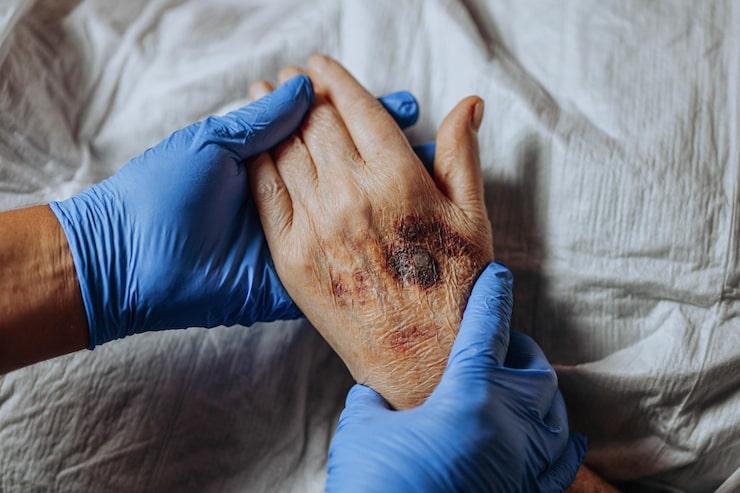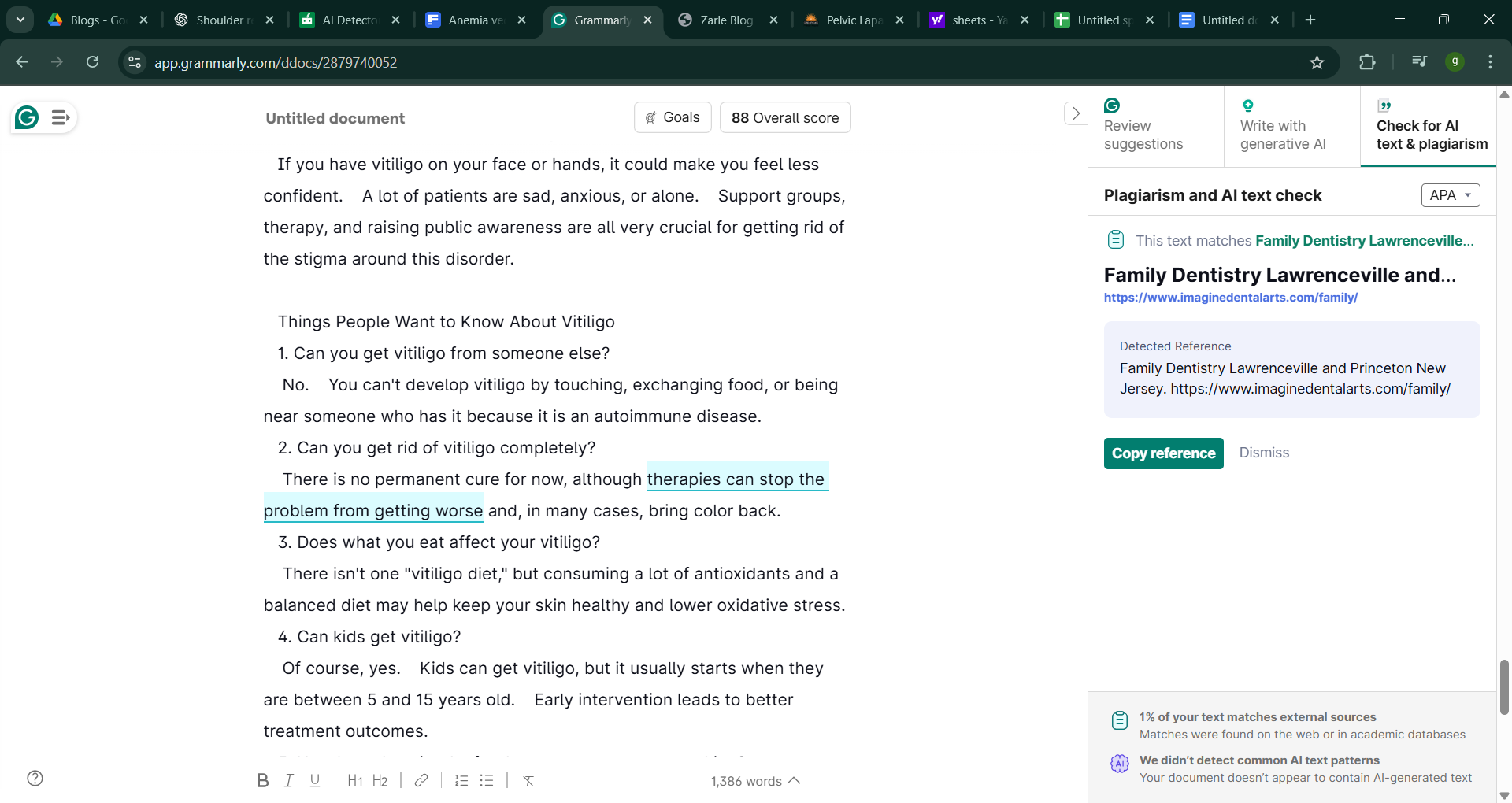
Hands of a person with Vitiligo
Skin tone is more than simply how you seem; it's also about who you are, how you feel about yourself, and how sure you are of yourself. Vitiligo is a disease that can change the color of your skin, which can have an effect on both your body and psyche. Vitiligo is a long-lasting skin condition that causes some areas of the skin to turn white and lose pigment. This happens when the melanocytes, the cells that give skin its pigment, die or cease working.
Vitiligo isn't contagious or deadly, but it can make individuals feel horrible about themselves because it's so easy to notice. Dermatology has come a long way over the years. Patients can now get medicinal and surgical procedures that help restore color or improve the look of their skin.
Anyone, regardless of ethnicity or gender, can have vitiligo. About 1–2% of the world's population has it. It can show up anywhere on the body, even on the face, arms, legs, hands, scalp, lips, and even inside the mouth.
When this happens, melanocytes stop making melanin, the pigment that gives hair, skin, and eyes their color. The skin gets white or bright spots without melanin.
There are different kinds of vitiligo.
It's crucial to know what kind of vitiligo you have in order to plan treatment:
Non-Segmental Vitiligo (NSV):
Segmental Vitiligo (SV):
Focal Vitiligo:
Universal Vitiligo:

A doctor examining the hand of someone with Vitiligo
The goal of medical therapies is to stop the condition from growing worse, make more pigment, and make the skin look better.
1. Things that are put on the skin to make it better
2. Narrowband UVB (NB-UVB) Therapy for Phototherapy:
3. Medicines that can be injected or taken by mouth:
4. How to treat losing color
Surgery is an option if vitiligo hasn't changed in 6 to 12 months and isn't spreading and if medical therapies haven't worked well enough.
1. How to accomplish skin grafting
2. Moving cells from one area to another Melanocyte transplantation occurs when melanocytes from one person are put on the skin of another person who has lost its color.
3. Micropigmentation, often called medical tattooing

Doctor comforting patient with vitiligo regarding their treatment
Dermatology research is moving forward quite swiftly. Here are some new things that are interesting:
In addition to treatment, daily care is also highly important for managing vitiligo:
If you have vitiligo on your face or hands, it could make you feel less confident. A lot of patients are sad, anxious, or alone. Support groups, therapy, and raising public awareness are all very crucial for getting rid of the stigma around this disorder.
1. Can you get vitiligo from someone else?
No. You can't develop vitiligo by touching, exchanging food, or being near someone who has it because it is an autoimmune disease.
2. Can you get rid of vitiligo completely?
There is no permanent cure for now, although therapies can stop the problem from getting worse and, in many cases, bring color back.
3. Does what you eat affect your vitiligo?
There isn't one "vitiligo diet," but consuming a lot of antioxidants and a balanced diet may help keep your skin healthy and lower oxidative stress.
4. Can kids get vitiligo?
Of course, yes. Kids can get vitiligo, but it usually starts when they are between 5 and 15 years old. Early intervention leads to better treatment outcomes.
5. How long does it take for the treatment to start working?
It changes. Phototherapy and surgery might need to be done every week or month for a time, but topical treatments might take a few months to work.
6. Will the spots of vitiligo keep getting bigger?
Not all the time. Some people with vitiligo have it for years without it getting worse. Others do, though. Treatments can stop or slow down the spread.
Vitiligo is a tough skin condition, but with new medical and surgical improvements, patients have more hope than ever. At the moment, there are a lot of different dermatology treatments available. These are some of the new treatments that are available: topical therapy, light therapy, melanocyte transplantation, and JAK inhibitors. If you want to know more, talk to specialists like Dr. Mohna Chauhan at Prakash Hospital in Noida.
Different treatments may work for different people, but obtaining advice from a professional, changing your lifestyle, and getting emotional support can all help a lot. If you or someone you know has vitiligo, talk to a dermatologist about the best ways to deal with it. And remember that vitiligo doesn't define who you are.

We offer expert care across key specialties, including Medicine, Cardiology, Orthopaedics, ENT, Gynaecology, and more—delivering trusted treatment under one roof.
Prakash Hospital Pvt. Ltd. is a 100 bedded NABH NABL accredited multispecialty hospital along with a center of trauma and orthopedics. We are in the service of society since 2001.
OUR SPECIALITIES
Contact Us
D – 12A, 12B, Sector-33, G. B. Nagar, Noida, Uttar Pradesh 201301
+91-8826000033

© 2025 All rights reserved.
Designed and Developed by Zarle Infotech